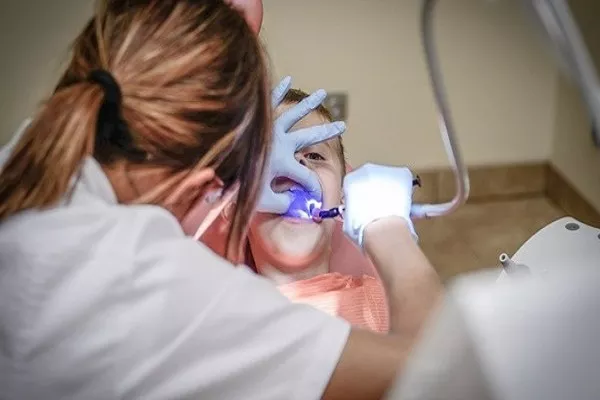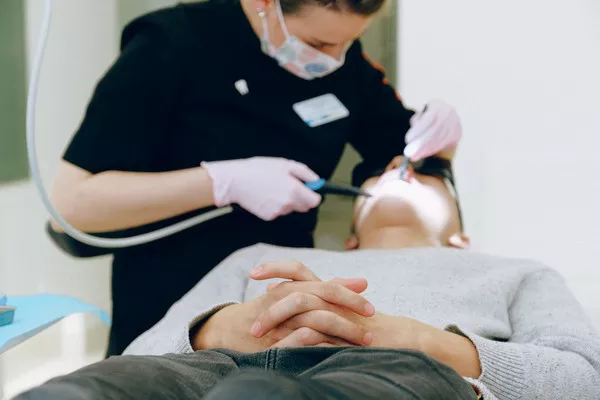When you leave the dentist’s chair after a filling, you expect relief from the discomfort that led you there in the first place. However, it’s not uncommon to experience sensitivity after a dental filling. Understanding why this occurs and what steps to take can help ease concerns and ensure a smooth recovery process.
Explanation of Sensitivity
Experiencing tooth sensitivity after a filling is a common occurrence and is usually temporary. The process of getting a filling involves removing decayed tooth material and filling the resulting cavity with a dental material, typically composite resin or amalgam. This procedure can cause irritation to the tooth’s nerve, leading to sensitivity.
Causes of Sensitivity
Several factors can contribute to sensitivity after a filling. One common cause is irritation of the tooth’s nerve during the drilling and filling process. Additionally, if the filling material used is not properly bonded to the tooth, it can allow substances like food and bacteria to enter the tooth, leading to further irritation.
Another potential cause of sensitivity is an allergic reaction to the filling material. While rare, some individuals may have sensitivity or allergic reactions to certain components of dental fillings, such as resin or metals like mercury in amalgam fillings.
Furthermore, incorrect bite alignment due to the filling can cause excessive pressure on certain areas of the tooth, leading to discomfort and sensitivity. This misalignment can result from improper shaping of the filling or changes in the tooth’s structure during the filling process.
Duration of Sensitivity
In most cases, sensitivity after a filling subsides within a few days to a few weeks as the tooth adjusts to the new filling. However, it’s essential to monitor the sensitivity closely and seek immediate dental attention if extreme pain or discomfort persists or worsens over time.
Symptoms to Monitor
While some degree of sensitivity is normal after a filling, certain symptoms may indicate a more serious issue requiring prompt dental attention. These symptoms include:
- Persistent or severe pain or sensitivity that does not improve with time.
- Swelling or inflammation around the filled tooth.
- Fever or other signs of infection.
If you experience any of these symptoms, it’s crucial to contact your dentist as soon as possible for further evaluation and treatment.
Prevention Tips
While sensitivity after a filling is common, there are steps you can take to prevent or minimize discomfort:
- Avoid consuming extremely hot or cold foods and beverages, as these can exacerbate sensitivity.
- Practice good oral hygiene by brushing and flossing regularly to prevent tooth decay and gum disease, which can contribute to sensitivity.
- Use a soft-bristled toothbrush and toothpaste formulated for sensitive teeth to minimize irritation.
- Consider using a fluoride mouthwash or gel to strengthen tooth enamel and reduce sensitivity.
By following these prevention tips, you can help protect your teeth and minimize the risk of sensitivity after dental fillings.
Treatment Options
If you experience sensitivity after a filling, there are several over-the-counter pain relief options you can try to alleviate discomfort. These include:
- Over-the-counter pain medications such as ibuprofen or acetaminophen can help reduce pain and inflammation.
- Desensitizing toothpaste containing potassium nitrate or fluoride can help block pain signals and strengthen tooth enamel.
- Topical numbing gels or creams can provide temporary relief from sensitivity.
If over-the-counter remedies do not provide adequate relief, or if sensitivity persists or worsens over time, it may be necessary to see a dentist for further evaluation and treatment. Your dentist may recommend adjustments to the filling or other interventions to address the underlying cause of sensitivity.
When to See a Dentist
While mild sensitivity after a filling is normal, certain signs indicate a need to seek dental attention. These include:
- Persistent or severe sensitivity that does not improve with time.
- Pain or discomfort when biting down.
- Swelling, inflammation, or discharge around the filled tooth.
- Fever or other signs of infection.
If you experience any of these symptoms, it’s essential to contact your dentist promptly to prevent further complications.
Post-Filling Care
After getting a filling, it’s essential to take proper care of your teeth to prevent future issues and maintain oral health. Here are some post-filling care tips:
- Avoid chewing on hard or sticky foods immediately after getting a filling, as this can dislodge or damage the filling.
- Continue practicing good oral hygiene by brushing and flossing regularly to remove plaque and prevent tooth decay.
- Schedule regular dental check-ups and cleanings to monitor the condition of your fillings and address any issues promptly.
- If you experience any new or worsening symptoms after getting a filling, such as sensitivity, pain, or swelling, contact your dentist for evaluation and treatment.
By following these post-filling care tips and seeking prompt dental attention as needed, you can help ensure the longevity of your fillings and maintain optimal oral health.
Conclusion
Experiencing sensitivity after a tooth filling is a common occurrence and is usually temporary. Several factors can contribute to sensitivity, including nerve irritation, allergic reactions, and incorrect bite alignment. While mild sensitivity is normal, it’s essential to monitor symptoms closely and seek dental attention if necessary. By following prevention tips, utilizing over-the-counter remedies, and practicing good oral hygiene, you can minimize discomfort and ensure a smooth recovery after getting a filling.
FAQs About Tooth Fillings
1. How long should tooth sensitivity last after a filling?
Tooth sensitivity after a filling is common and typically lasts for a few days to a few weeks. During this time, you may experience sensitivity to hot, cold, or sweet foods and beverages. However, if sensitivity persists or worsens over time, it’s essential to contact your dentist for further evaluation.
2. How do you know if a filling is bad?
There are several signs that may indicate a problem with a filling. These include:
- Persistent or severe sensitivity or pain around the filled tooth.
- Discoloration or darkening of the filling.
- Rough or jagged edges on the filling.
- Sensitivity or pain when biting down.
- Swelling, inflammation, or discharge around the filled tooth.
If you experience any of these symptoms, it’s crucial to see your dentist as soon as possible to determine if the filling needs to be repaired or replaced.
3. Is it normal for a tooth to hurt 2 months after a filling?
While it’s not common for a tooth to continue hurting two months after a filling, it’s possible for sensitivity or discomfort to persist in some cases. Possible reasons for ongoing pain include:
- Inadequate bonding of the filling to the tooth, allowing bacteria to enter and cause further decay.
- Nerve irritation or inflammation from the filling procedure.
- Changes in the tooth’s structure or alignment over time.
If you experience persistent pain or sensitivity two months after a filling, it’s essential to contact your dentist for further evaluation and treatment.
4. Can a dentist mess up a filling?
While dental fillings are generally safe and effective, there is a possibility of complications or errors occurring during the filling process. Some potential issues that can arise include:
- Overfilling or underfilling the cavity, leading to improper fit and potential discomfort.
- Inadequate preparation of the tooth surface, resulting in poor bonding of the filling material.
- Failure to detect underlying decay or damage to the tooth before placing the filling.
- Allergic reactions or sensitivity to the filling material used.
If you suspect that a filling may be faulty or causing discomfort, it’s important to consult your dentist for an evaluation. They can assess the filling and recommend appropriate treatment to address any issues.






























